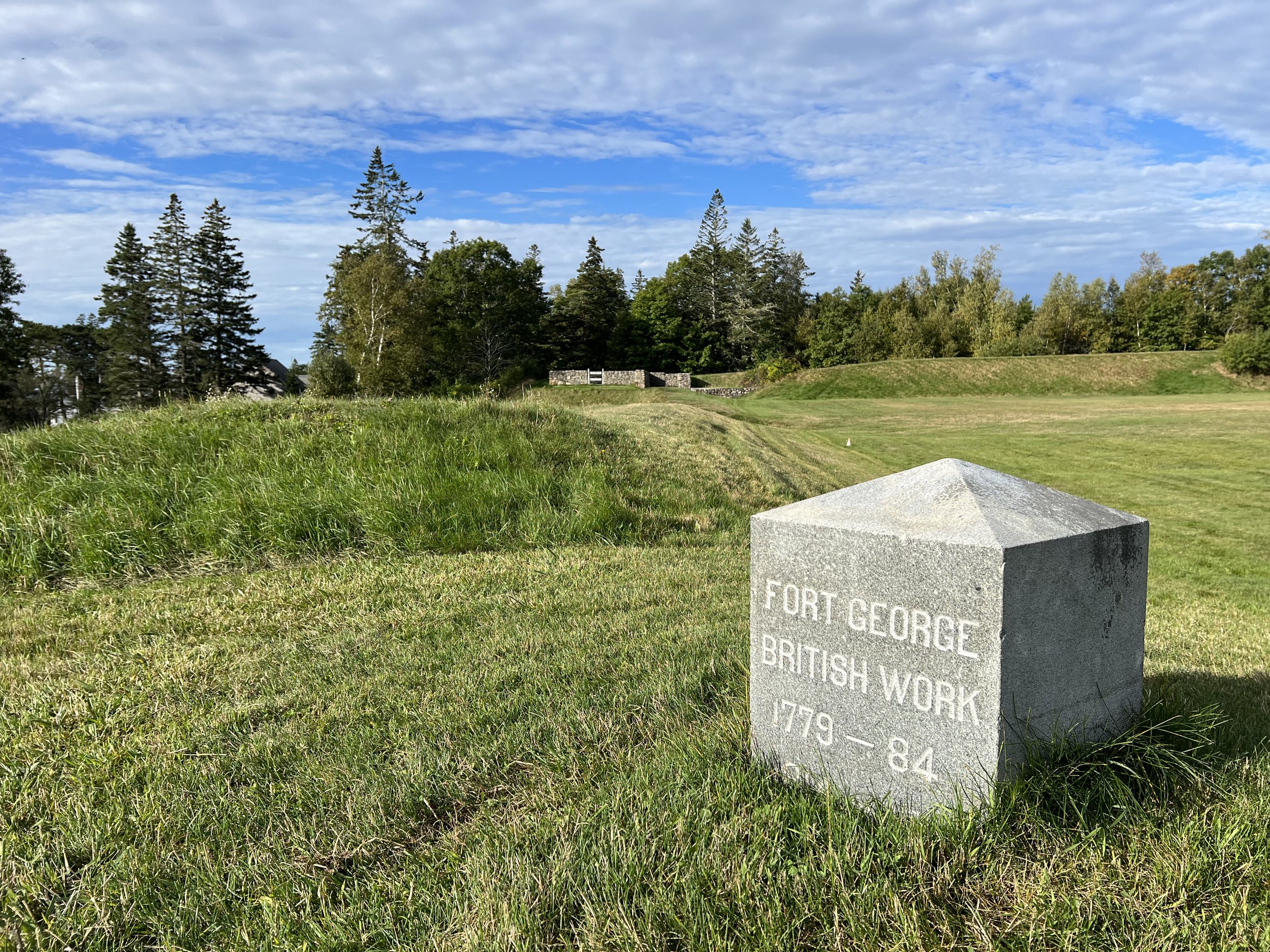
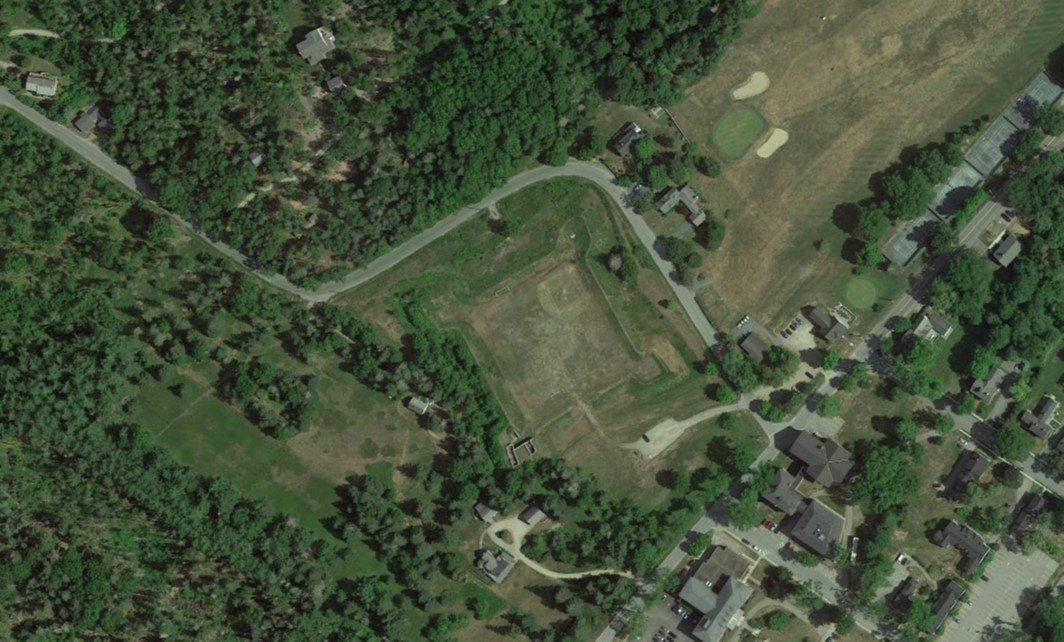

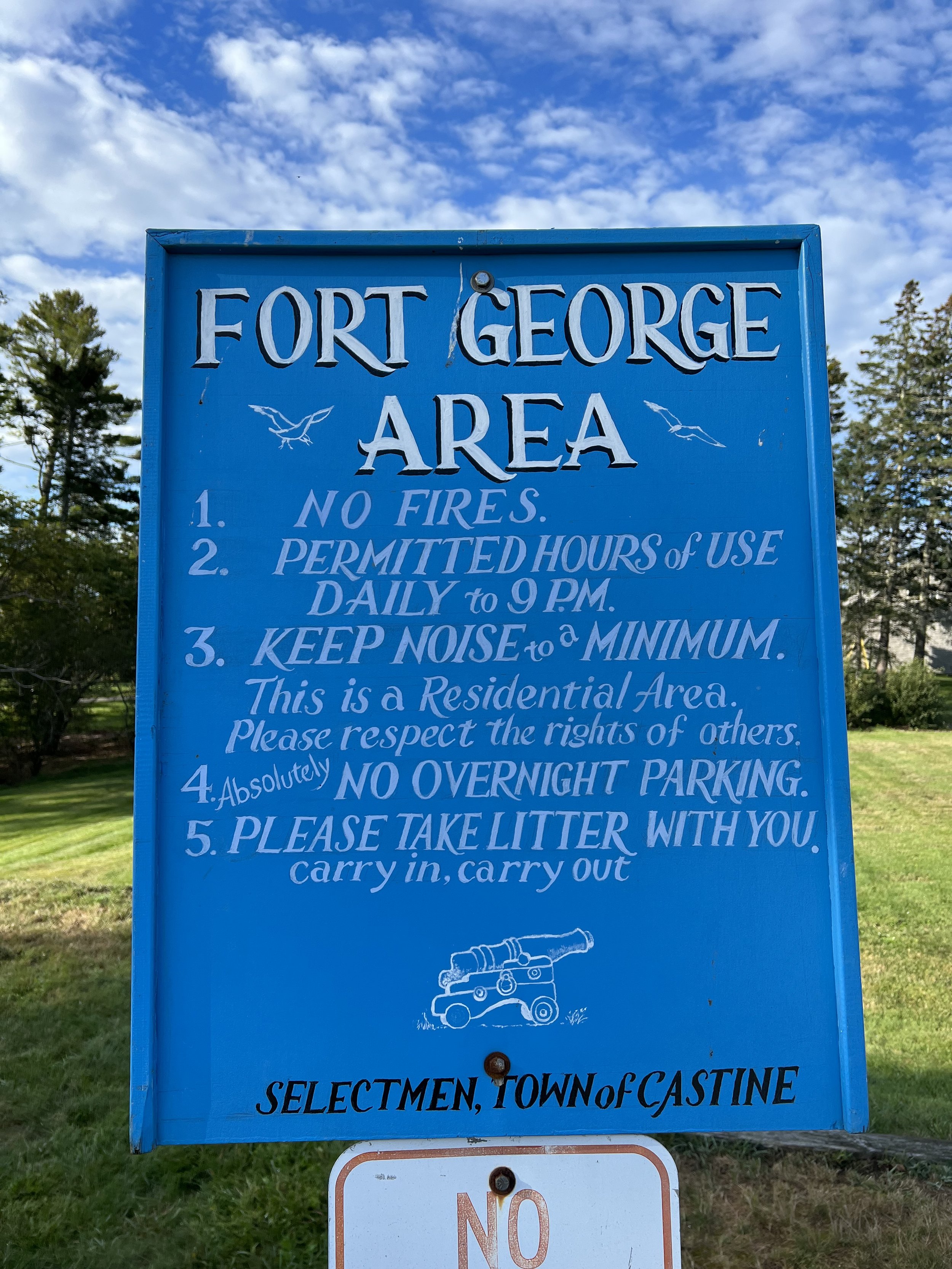
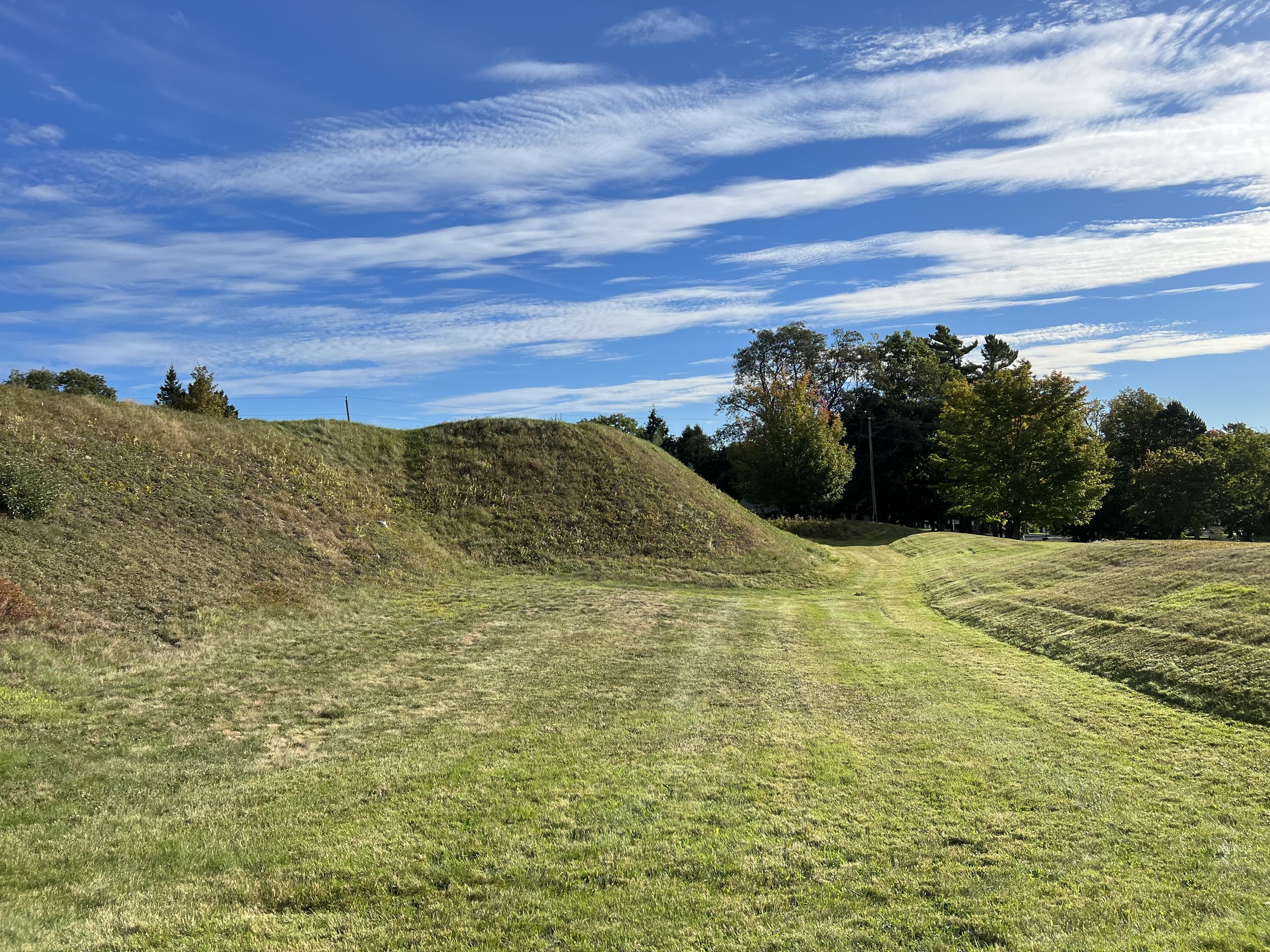
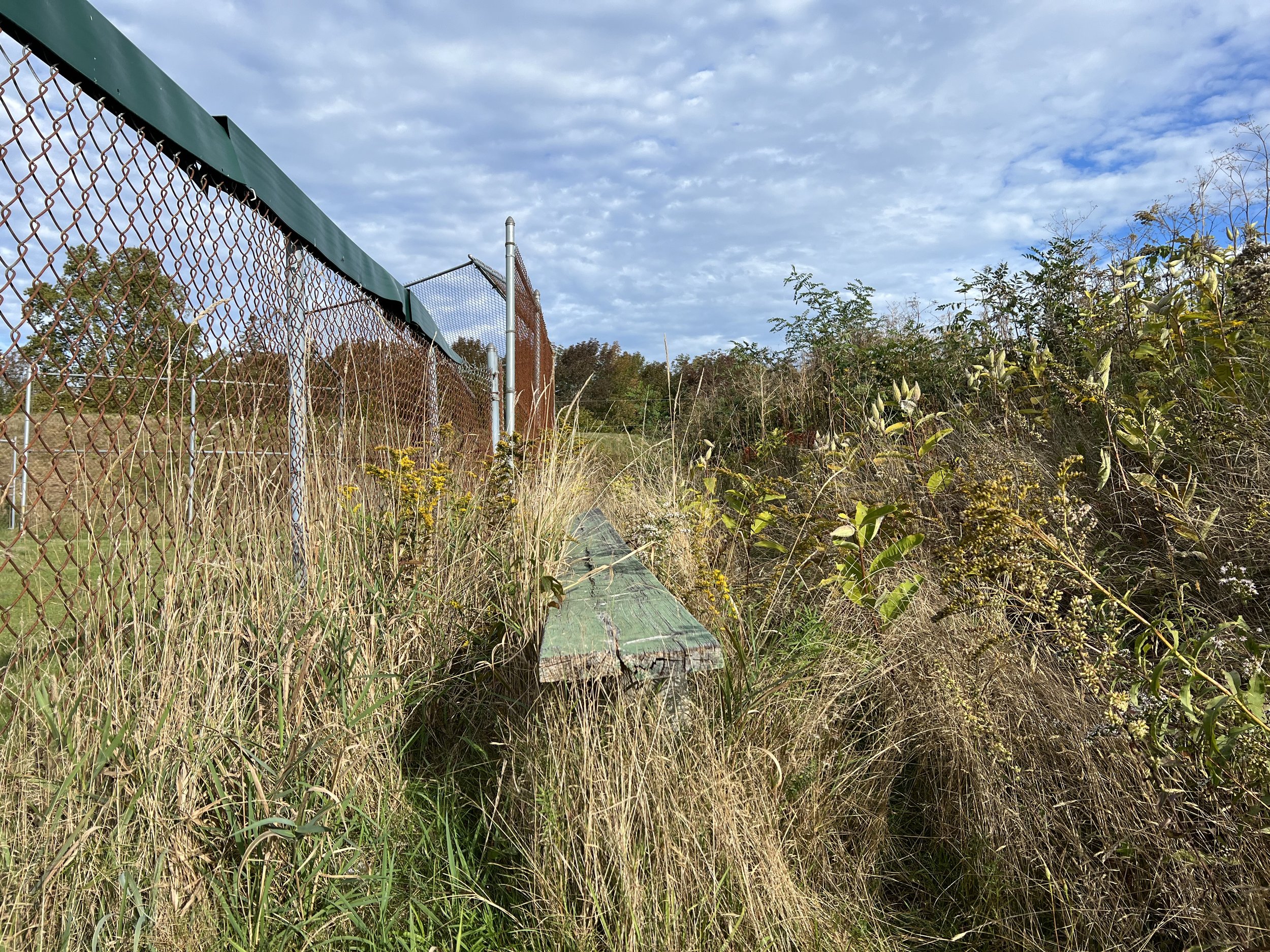
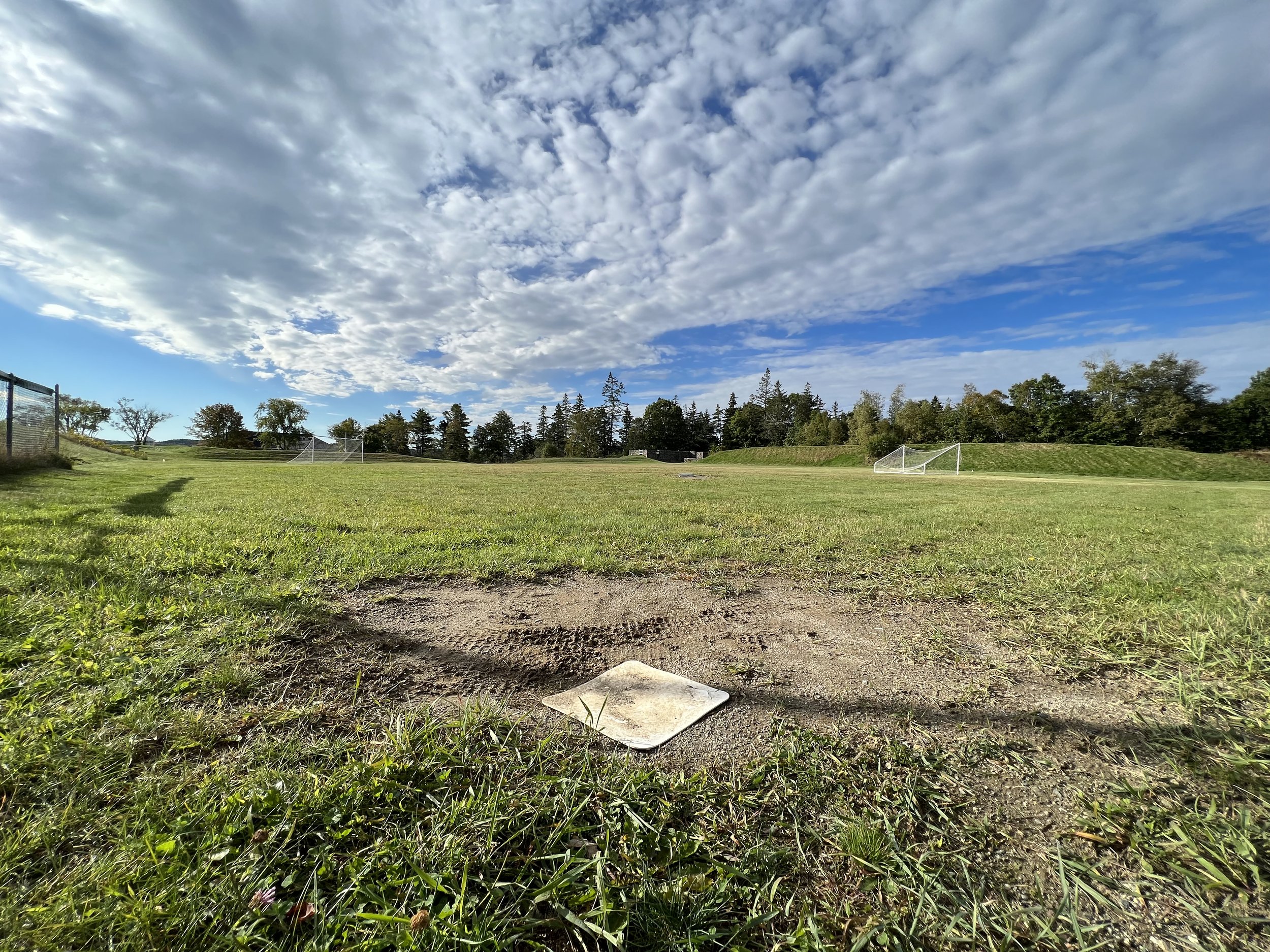

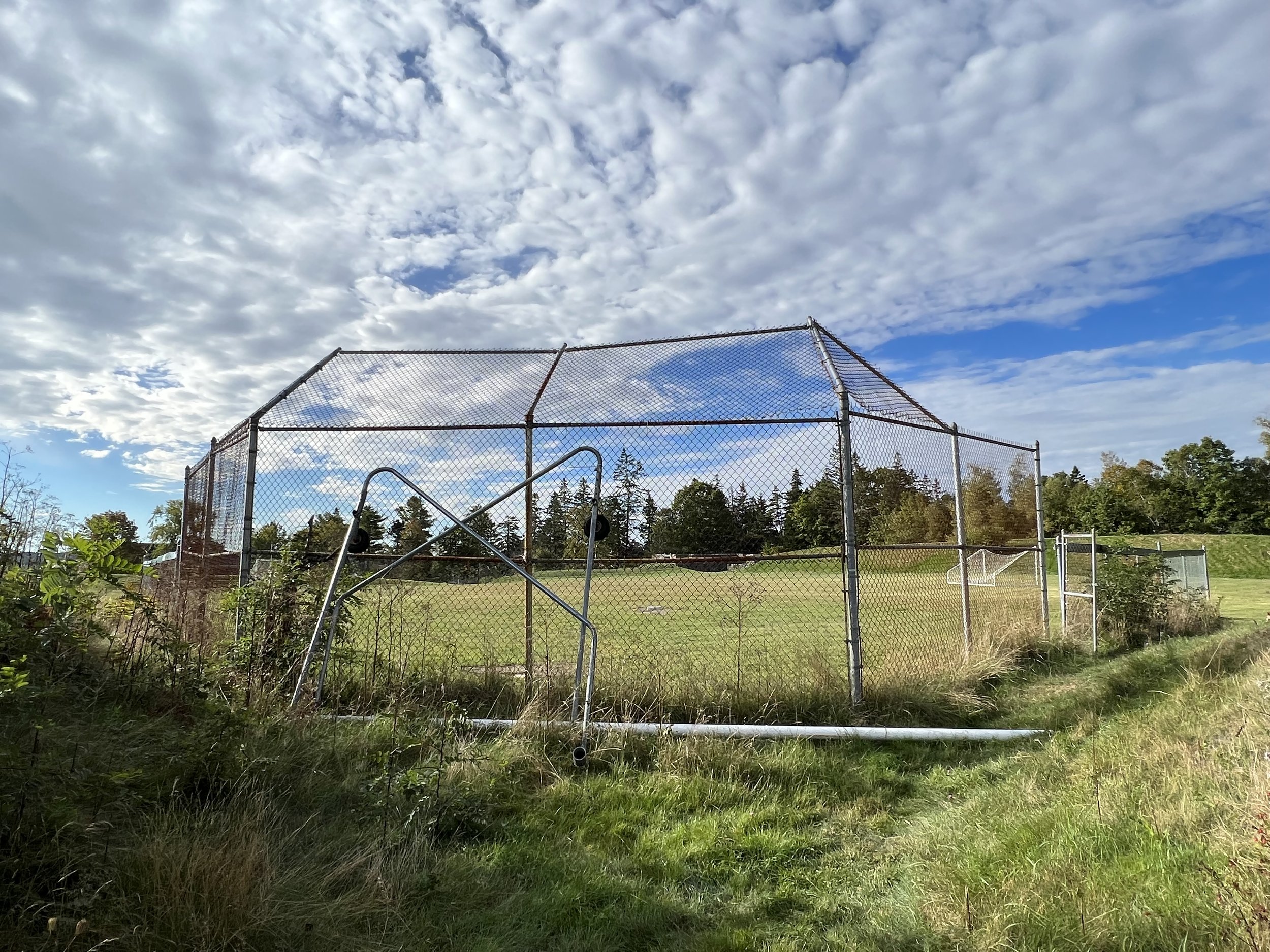
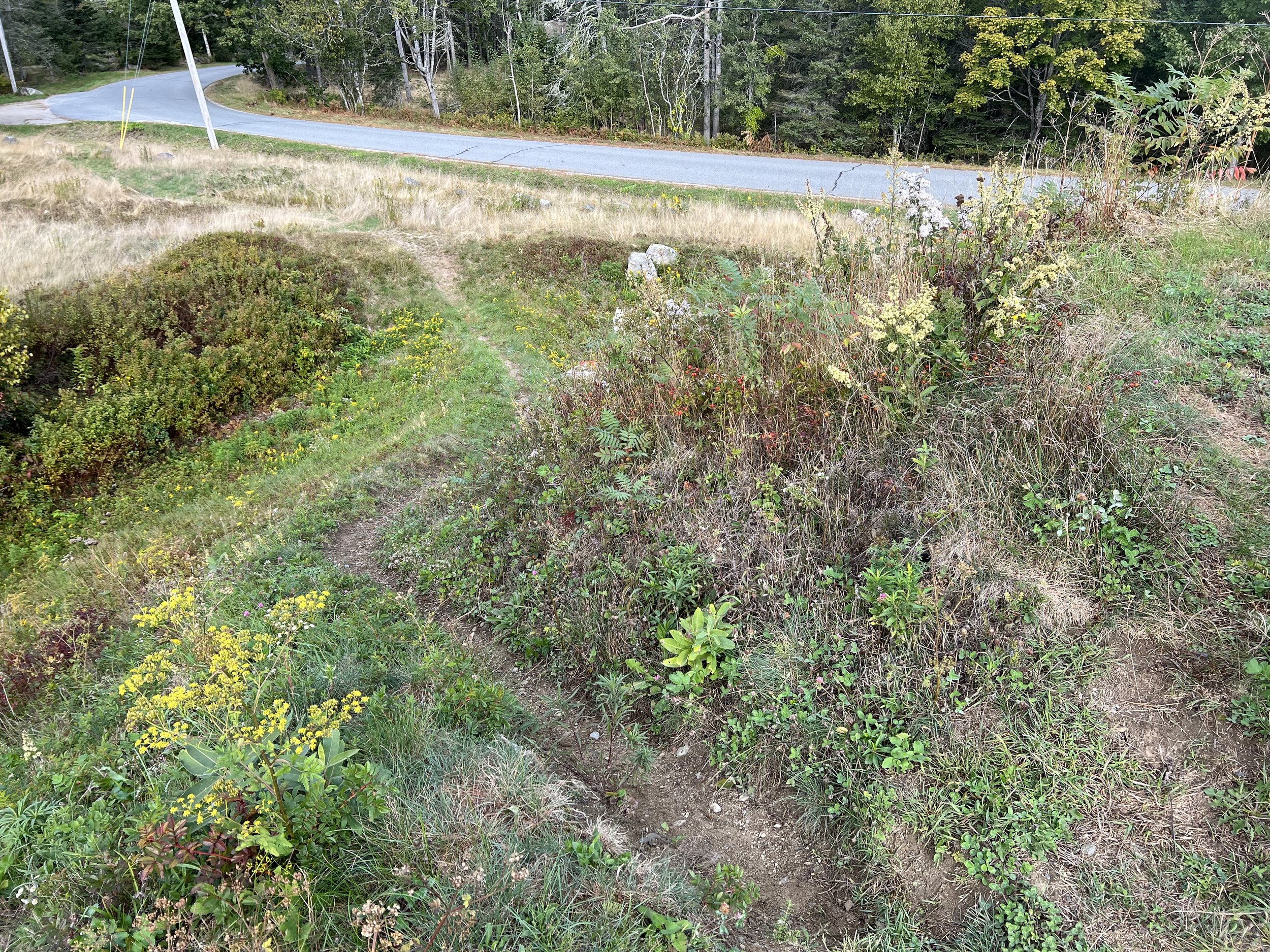
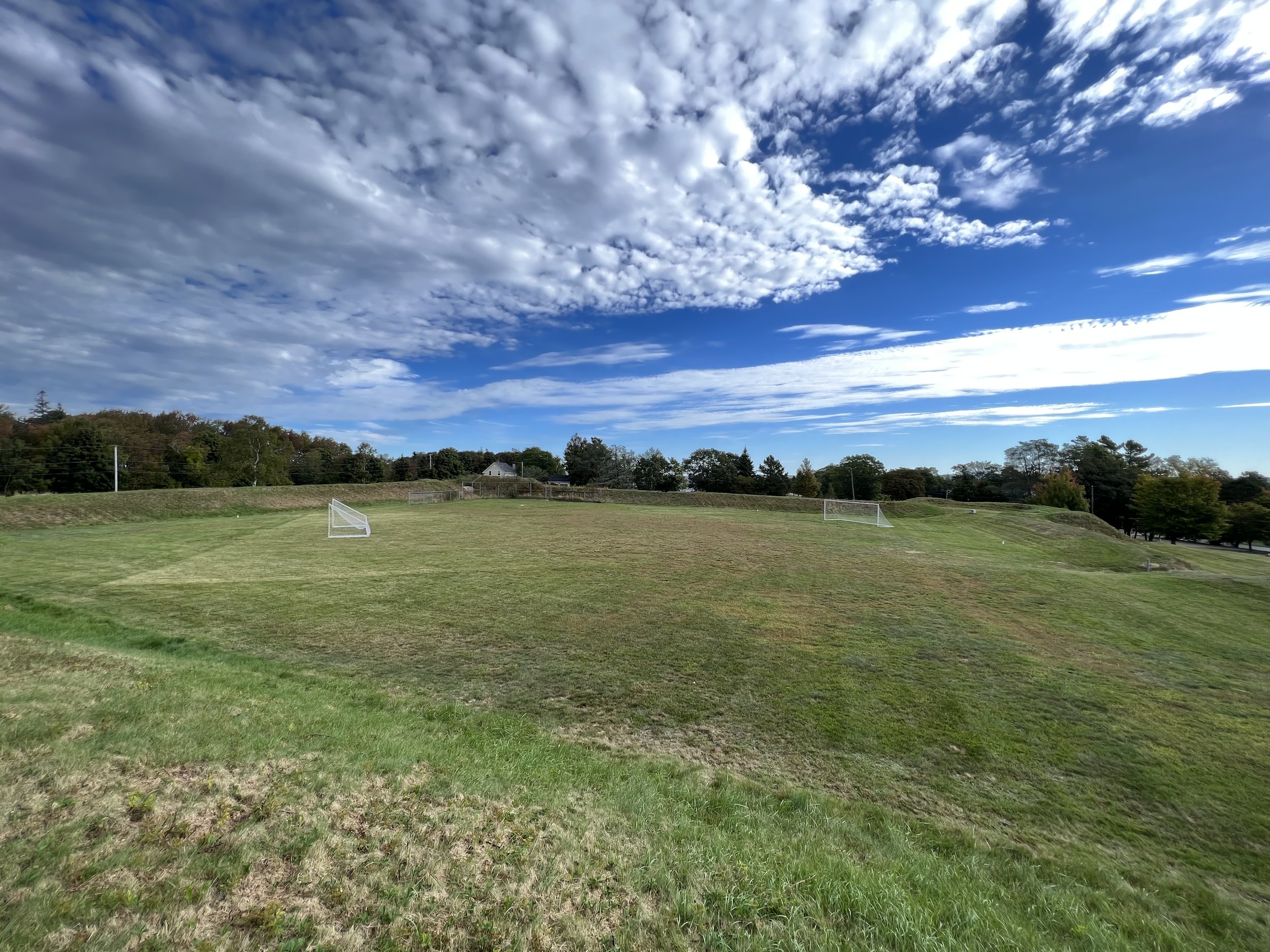
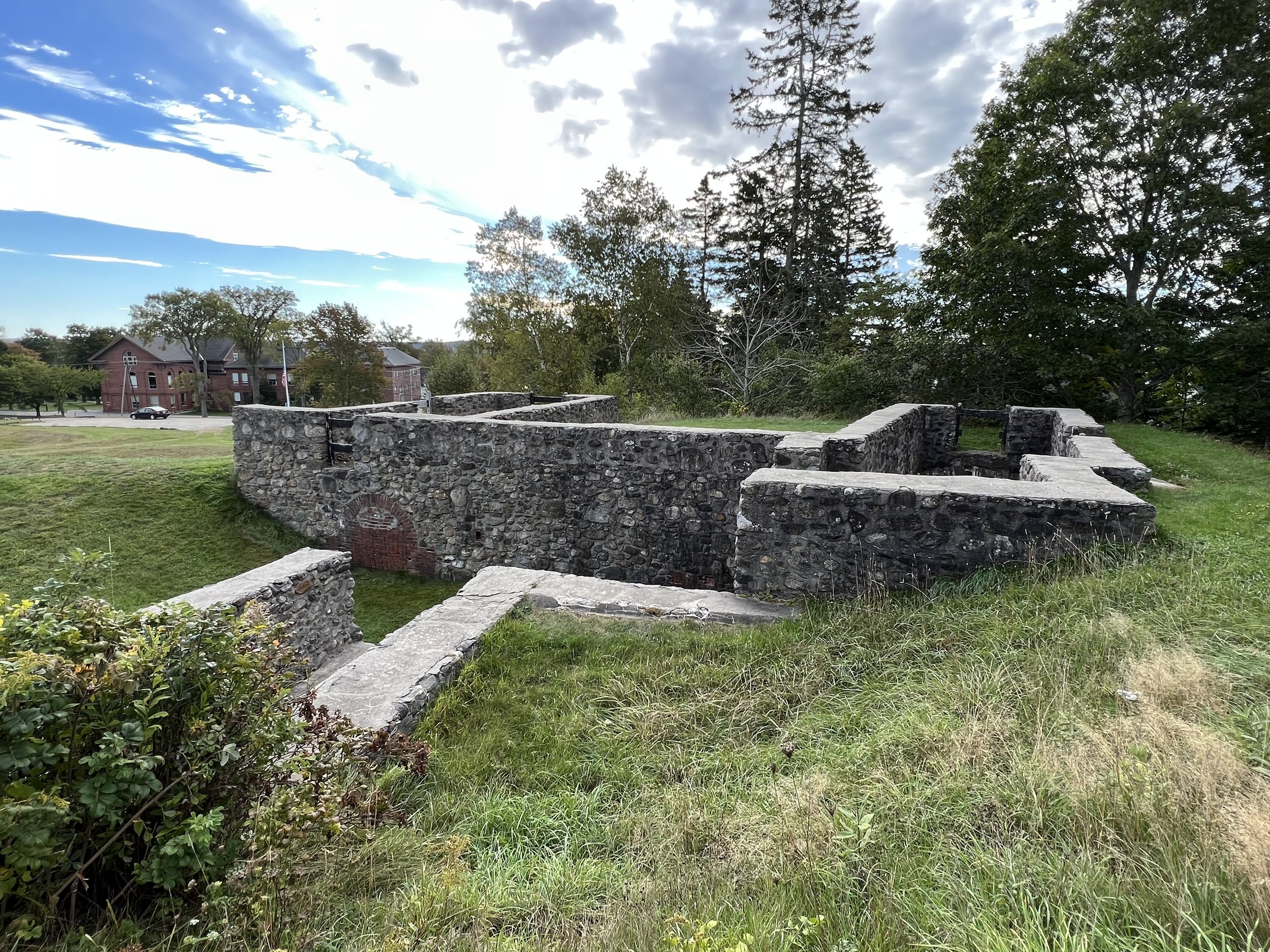


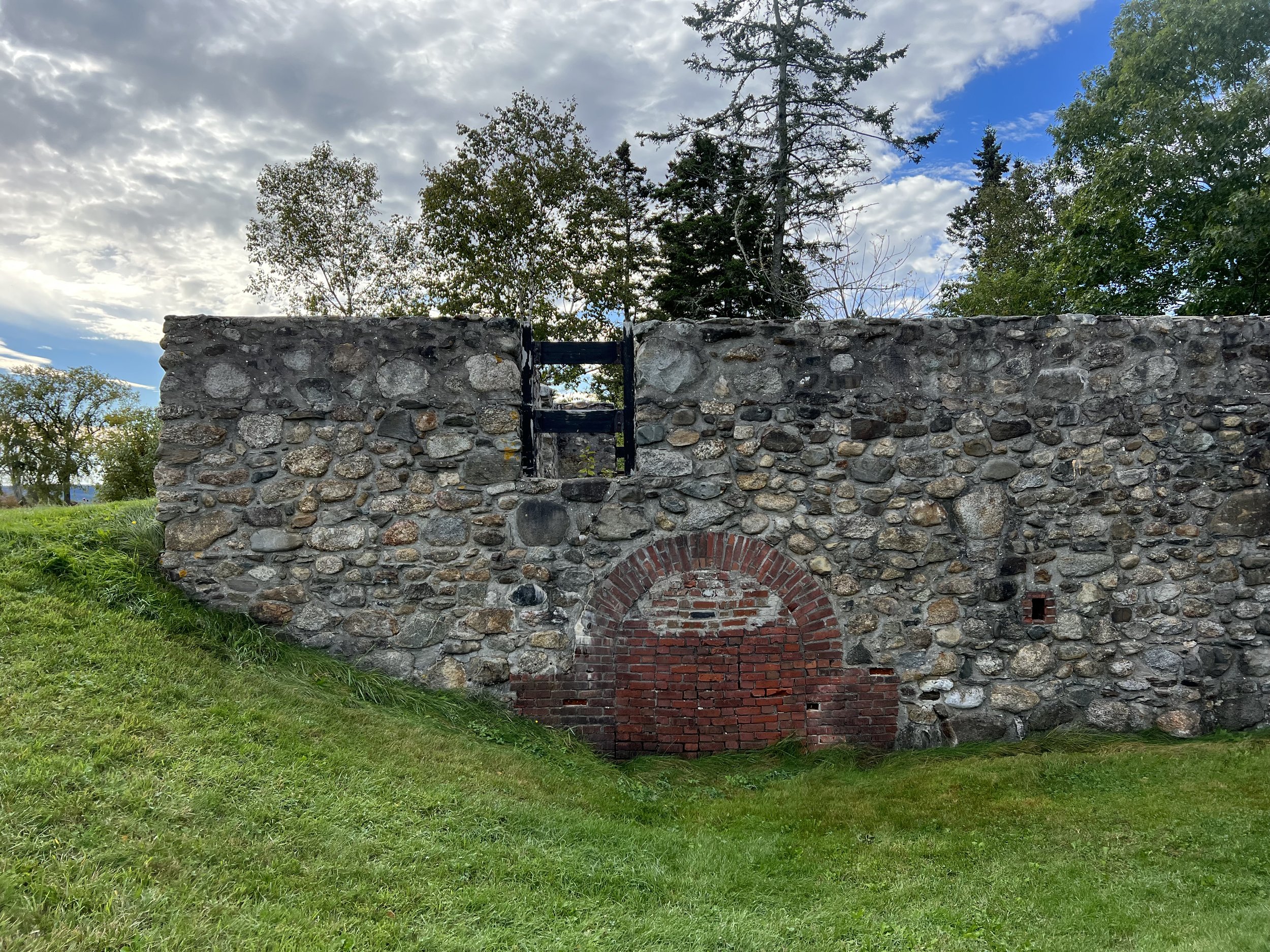
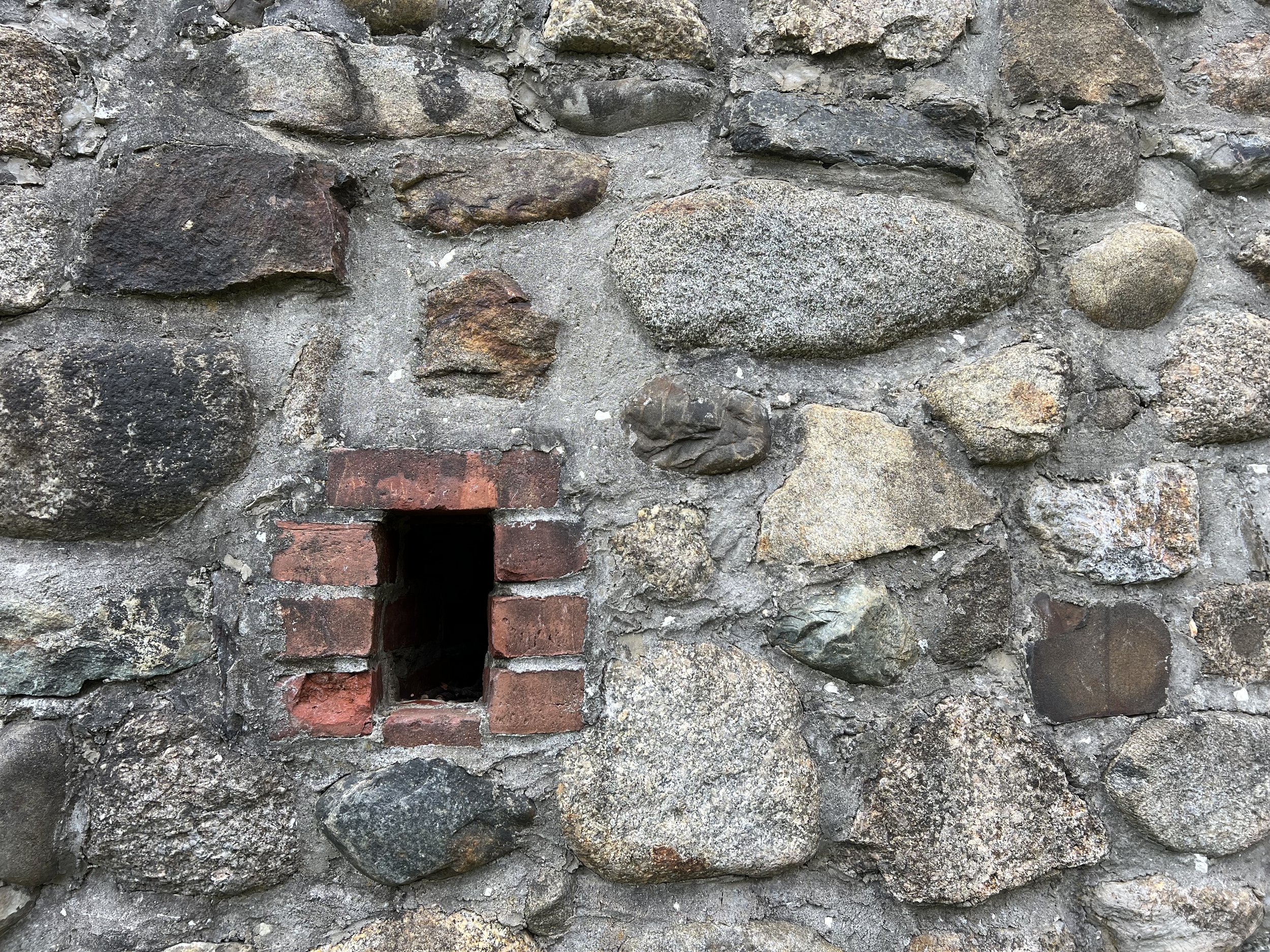
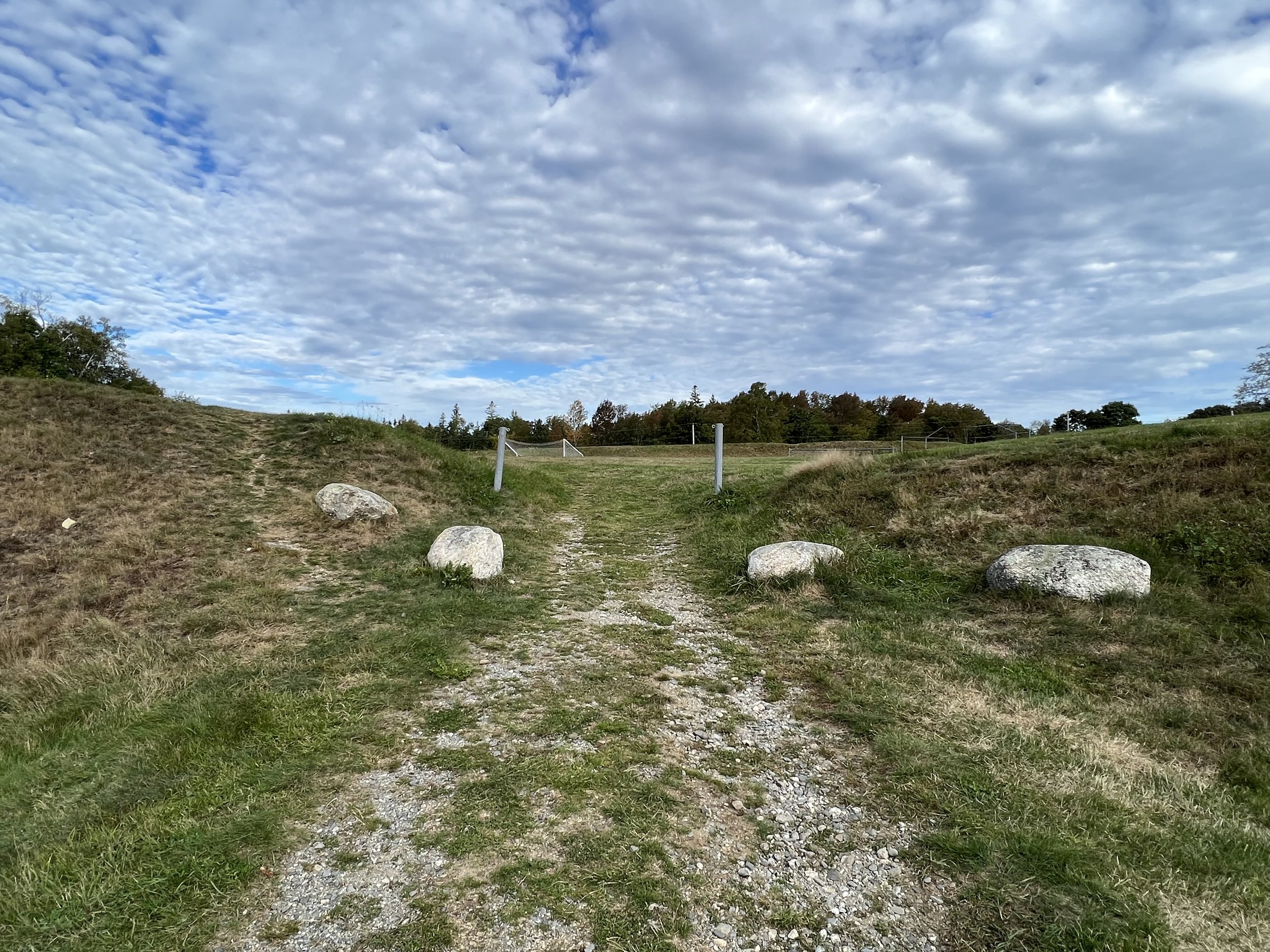
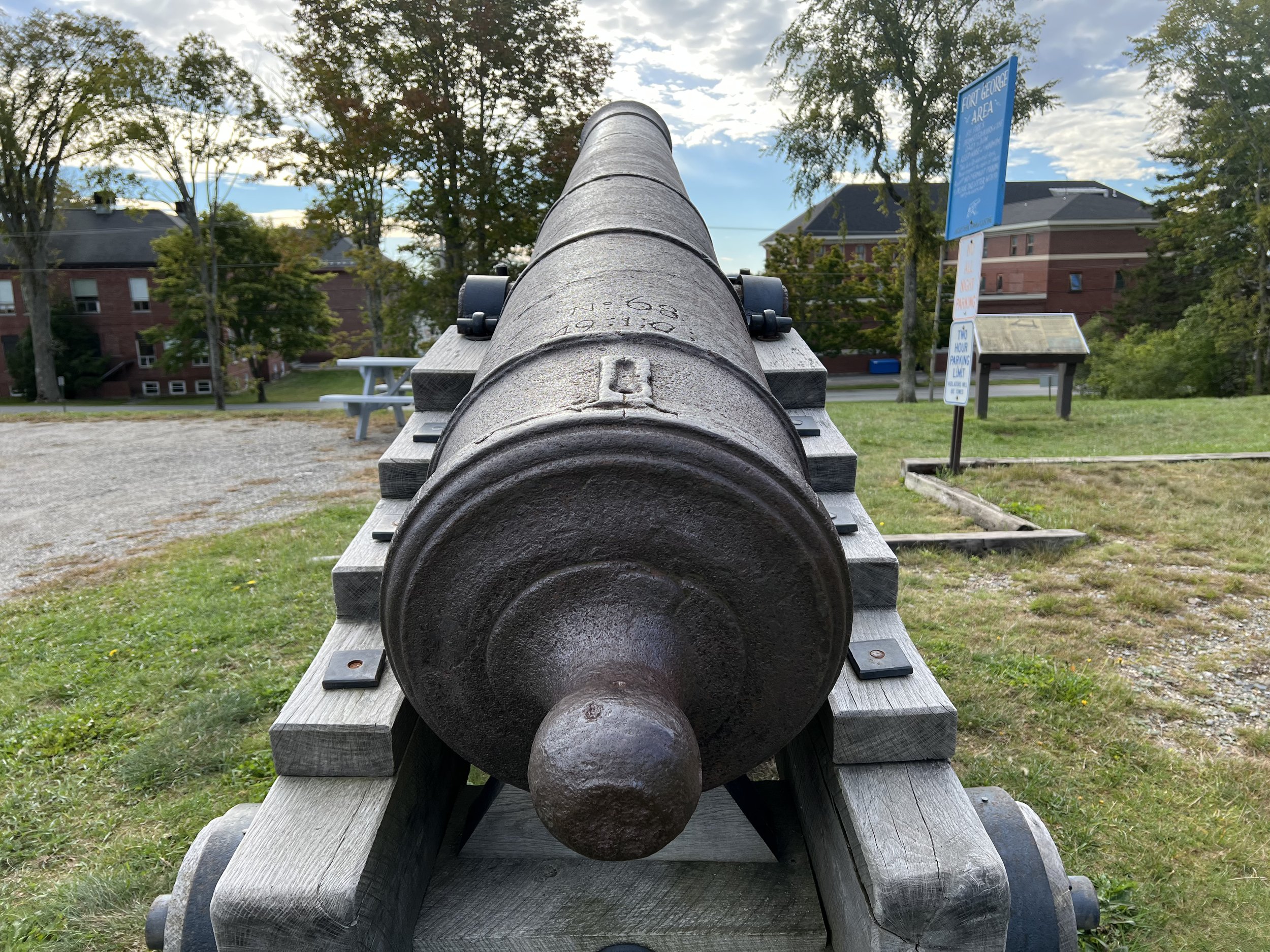

Story
Fort George is a Revolutionary War-era fortification originally built as Fort Castine by British forces in 1779. Later renamed Fort George in honor of King George III, it was strategically located near the Penobscot and Bagaduce Rivers. This strategic importance made it a main objective of America’s failed Penobscot Expedition to recapture Mid-coast Maine from British forces. The British re-occupied Fort George during the War of 1812, abandoning it for the last time in 1815. After the war, residents of Castine salvaged materials from the fortification for use in new buildings and infrastructure in town, while other buildings were outright demolished or burned to the ground.
The fort had an interesting “second life” in the late nineteenth and early twentieth centuries. As early as 1888, baseball games were played inside the fort boundaries and served as the home field for Eastern State Normal School and Castine High School. Residents also used the fort as community space for celebrations and gatherings, such as the Centennial of Maine Statehood in 1920. In 1930, the State of Maine acquired the property, but it was not until the 1960s when it conducted archaeological investigations and completed a limited reconstruction of historic structures likes the bombproof apartments in the south bastion. By 1969, the fort was listed in the National Register of Historic Places.
Threat
Fort George has not received the attention and resources it deserves, leaving the Revolutionary War-era fort in a state of disrepair, vulnerable to further damage, and relatively unsafe for public access. Many of the original elements of the fortification remain including the ditch, curtain walls, and bastions, while erosion has diminished the original height of the earthworks. The site is not properly signed for public use and inadequate barriers easily permit inappropriate access to vehicles. Along with earthworks that have been consumed by vegetation, the brick and wooden elements of the remaining structures on site are deteriorating and creating a hazardous environment for the public.
While the nearly five-acre site is owned by the Maine Bureau of Parks and Land, the Town of Castine is legally responsible via a decades-old agreement to manage and maintain the site. This has left Fort George in limbo. The original agreement dates to 1950 and was to be renewed every five years, but the last renewal occurred in 1981! The agreement also has ineffective language that focuses more on trash pick-up and maintenance of the baseball field, favoring recreation over historic preservation and interpretation.
The Town of Castine, with a population just over 1,000 people, does not have the capacity or resources to steward a historic site on its own, especially with a need to prioritize essential services to its residents. The effects of deferred maintenance and attention has snowballed into a severe lack of interpretation, public programming, and thus a diminished public interest and ownership of the site.
How to Get Involved
The most sustainable, long-term way to preserve Fort George is to revisit the agreement between the State of Maine of the Town of Castine. A 2021 Historic Properties Management Plan prepared for the Town of Castine concluded the “most significant impact to the cultural resources that comprise the Fort George property stems from the tangled lines of authority for the preservation, maintenance, development, and interpretation of the site. The situation is a direct result of the historical split between the State’s ownership and the Town’s management of the property.” The report pointed out that placing the burden of maintaining a historic site of this caliber on a small town “guarantees that the site will never be interpreted or promoted to its full potential.”
A convening of state and local officials, preservation-minded organizations, and interested residents is paramount to charting a path for Fort George. Enhanced attention by the state and town would also go a long way to supporting residents who care about the property but have felt overwhelmed by all that it needs. First steps could include state-funded signage along Route 1, promotion of Fort George at Midcoast State Parks and historic sites, and inclusion in the state’s tourism promotion materials. Improvements like signage and low-impact barriers would also help dissuade inappropriate use of the site and prevent vehicles from entering the perimeter of the earthworks.
For more information on Fort George and how you can join the conversation to rethinking its future, please contact Castine Town Manager, Shawn Blodgett, at 207-326-4502 or townoffice@castine.me.us.
The Friends of Castine Fortifications, a community organization dedicated to the protection and promotion of Castine’s many forts, maintains a Facebook page.

